Exactly
half a century ago or in October 1962, Indian army suffered a
most humiliating defeat at the hands of Peoples Liberation Army or
PLA of China In Ladakh and Arunachal Pradesh. For ordinary citizens
of India, smug and complacent in the belief that India's borders were
well protected, it was a very severe shock and a dawn of new
realization that in the terms of the Realpolitik of the world, the
power of the gun matters most. Unless the country has that power all
talk of peace and non alignment were just bubbles in the air.
A
tripartite meeting of the British administration in India and
representatives of Tibet and China was held in 1913 at Shimla in
India. A draft treaty was agreed upon during this meeting. This
agreement is known as Shimla treaty. According to the terms of this
treaty, the relationships and borders between these three countries,
namely India, Tibet and China, were fixed and agreed upon. However,
even though the Chinese representative attending the meeting, Mr.
Ivan Chen had initialed the draft treaty, he refused to put his
country's official seal on the paper. Subsequently, the Government in
Beijing declared that this treaty was unacceptable to China.
According to representatives of India and Tibet, since the treaty was
mainly about the relationships and the borders between two sovereign
countries, India and Tibet, they believed that the Chinese
representative had merely attended the meeting as an observer and
his approval or disapproval had no bearing on the proceedings of the
treaty. Eventually another meeting was held in July 1914 between
representatives of India and Tibet and the draft treaty was finally
approved, initialed and sealed.
In
this accord, it was agreed that a region spread over 14380 square
miles and known as Aksaichin: located east of Ladakh, between
Karakoram mountain range and Kun Lun mountain ranges, would be part
of British India. The region of Ladakh in those days, was part of the
princely state of Jammu and Kashmir. In fact, old references show
that the state administration used to have a small police outpost at
Shahidulla( Located on present Tibet- Xinjiang road) in this region.
1908 map of India
After
India became independent, the responsibility of defending this region
was given to CRPF or Central reserve police force. Since the region
became quite inaccessible during winter months, patrols were run by
the CRPF during summer time to Aksaichin.
Access routes to Aksaichin from Ladakh
There
were only two possible routes by which these police could reach
Aksaichin. The first route was through famous Karakoram pass and
reached up to Shahidulla. The second route was more important and
went through Marsemik pass near Pangong lake to Kongka pass and then
to Kanak pass on Aksaichin-Tibet border.
CRPF Border posts prior to 1959
Before
we proceed further, it is important to note why such an inhospitable
and remote region was and is so important for China as well as India.
For India, it was country's only gateway to central Asia after the
partition in 1947. For China, the remote western provinces of Tibet
and Xinjiang were effectively separated by Indian possession of
Aksaichin and prevented it from movement of armed forces from Tibet
to Xinjiang and vice-versa, regions where there was considerable
unrest. Sometime in the decade of 1950's, Chinese decided to
construct a road joining Tibet and Xinjiang illegally, in the Indian
territory.
The route followed by Indian observation patrol of 1952 led by Capt. Nath and Capt.Puri
When
news of such Chinese activities started circulating in Ladakh, Indian
army decided to send an observation patrol to the region.
In the summer of 1952, two officers: Captain R. Nath of Kumaon
Regiment and Captain Suri of Ladakh Militia were sent by the army to
Aksaichin region with a team. This team entered Aksaichin through
Kongka pass mentioned above and travelled up to Kanak pass. During
observations they came to know from local shepherds about Chinese
surveyors carrying out survey of this region for building a road in
Aksaichin. There were no PLA army units in that area then. Both these
officers were felicitated and praised for their good work but their
report was just kept under wraps. Just imagine that if India had sent
army units to Aksaichin then and had prevented Chinese for carrying
out the road building work, the entire border dispute, which
developed later would have been nipped in the bud. By 1955, Chinese
had well established themselves west of Kanak pass. In 1957, they
announced that Aksaichin was part of China and the road joining Tibet
and Xinjiang was ready. Chief of army staff, General Thimayya wanted
to start an army operation in Aksaichin but was prevented by the then
defense minister Krishna Menon, who claimed that China was India's
true friend.
In
1958, two Indian patrols in Aksaichin were made to surrender by PLA
and then later released. Unfortunately, all these developments were
completely hidden from Indian people by then Prime minister of India,
Jawaharalal Nehru, who still thought that China was the greatest
friend of India and would never take any steps against India. For
China, Nehru's policy of keeping China border activity under wraps
was a great boon, as they developed massive infrastructure along the
Ladakh borders and built a well planned offensive capability there.
Nehru was forced within an year to change his China perspective, as
two major incidences took place. The first incidence out of these
two, was the uprising in Tibet against Chinese rule and subsequent
asylum asked by Tibetan head of state, Dalai Lama in India. This had
major repercussions on Nehru's China policy. Many in India started
criticizing Nehru for his soft attitude towards China and wanted
India to take strong steps to counter Chinese menace.
The
second incidence is known as “Kongka pass incident” and was
essentially caused by complete lack of co-ordination in Delhi between
Home ministry controlling CRPF, and defense ministry with Krishna
Menon in charge as a minister. By September 1959, Chinese had
encroached upon Indian areas outside Aksaichin and their army units
had started even arresting the Indian border police on routine
patrol. Indian Government was still not ready to take any action and
on the contrary asked the home ministry to stop border patrols.
India's home ministry, controlling the border police, probably were
unaware of Chinese build up in Ladakh and what was happening inside
Aksichin, and decided to take counter action on its own against
Chinese.
DSP Karam Singh
Hot Springs area; geographical situation
In
an extremely defiant gesture, DSP Karam Singh bent down, picked up an
handful of dust and touched it to his heart, indicating that the land
belongs to India. When Indian media came to know about this, DSP
Karam Singh and his team became national heroes overnight. But that
was too late. At Kongka pass DSP Karm Singh's team faced complete
massacre. They just could not defend themselves with their WW II .303
bolt rifles against Chinese soldiers equipped with semi automatic
rifles, machine guns and mortars. Within few hour, 10 policemen from
DSP Karam Singh's team were lost. Realizing that they can not defend
themselves, Indians finally surrendered. They were released by the
Chinese after 12 days with much torture and only handful unarmed
Indian police were allowed to take back the bodies. A police
constable ' Sonam Wangyal' describes this scene in these words.
“Even while we were collecting the bodies, Chinese women in uniform were clicking photographs. The Chinese soldiers were wrapped in snow-white warm clothing and snow-boots while were in our woolen Angora shirts and jerseys, bearing the brunt of the biting cold at that prohibitive height of 16,300 feet.”
The CRPF policemen, who died in Chinese ambush
The
shocking news about “Kongka Pass incident” reverberated
throughout India like wild fire. Nehru's China policy was criticized
heavily and demands were made to remove Krishna Menon from the post
of defense minister.
In
Delhi, the home ministry was condemned for their foolish adventure by
the chief of army staff and finally a decision was taken that all
CRPF personnel from Ladakh would be replaced by army units. Meanwhile
Prime Minister Nehru faced heavy fire for his China policies. Finally
buckling under tremendous public pressure, he announced the so called
“ Forward policy” under which, Army would establish forward
posts in the areas where Chinese had established control during last
few years. Those who knew the current situation, realized the
ineffectiveness of this announcement. However, general public in
India thought that China would now be paid in its own coins.
Hot springs memorial for policemen
Sensing
India's mood, Chinese suddenly announced that if Indian army ventures
out in Ladakh, their army units would move south of the border into
Arunachal Pradesh in the north east, where the border was well
demarcated and is known as McMahon line.
The
stage was now set for a major clash between two Asian neighbours. It
actually happened 3 years later or in 1962.
(To
be concluded)
11
October 2012
. 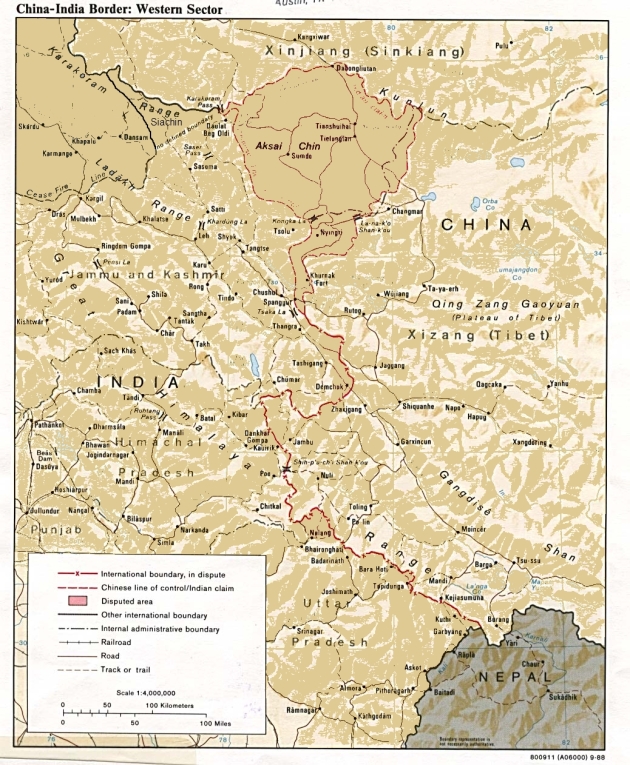
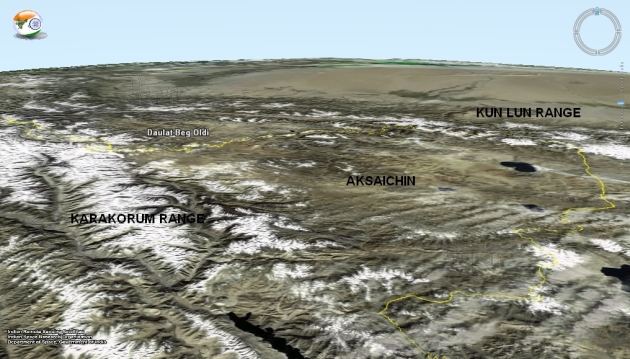

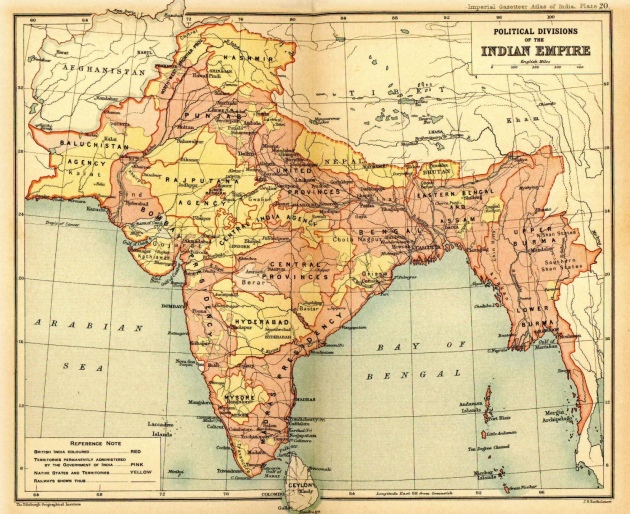



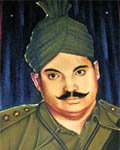

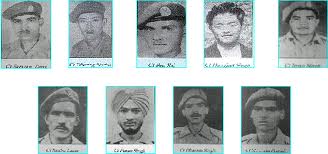

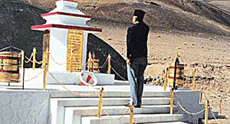
It is a very good and informative article. I was not fully aware of detailed happenings in those times and feel that many people like me will be properly informed now.
ReplyDeleteditto Sunil.
ReplyDeleteAh well, we were newly independent, naive, ruled by people who never had any experience or even understanding about 'defending' our country. China must have felt like taking candy from a child!
ya the article is quite interesting to read but is India ready for such such war in future.....as Ladakh region still remain cut off from rest of country for six months....
ReplyDeleteDeldan
ReplyDeleteThanks for your comment
This comment has been removed by the author.
ReplyDeleteOne reader of my blog 'Araving the star in rising has pointed out a factual inaccuracy in this post. He points out that ITBP was formed in October 1962 and therefore obviously not involved in this part of history. He is quite right and all the policemen mentioned here actually belong to CRPF. I thank Aravind for pointing out the error.I have made necessary corrections.
ReplyDeleteVery interesting blog. Just a typo; "DSP Karam Singh reached Hot Springs on 20h October 2012"? I guess it would have been 1959.
ReplyDeleteThanks for pointing out the typo: error stands corrected.
Delete